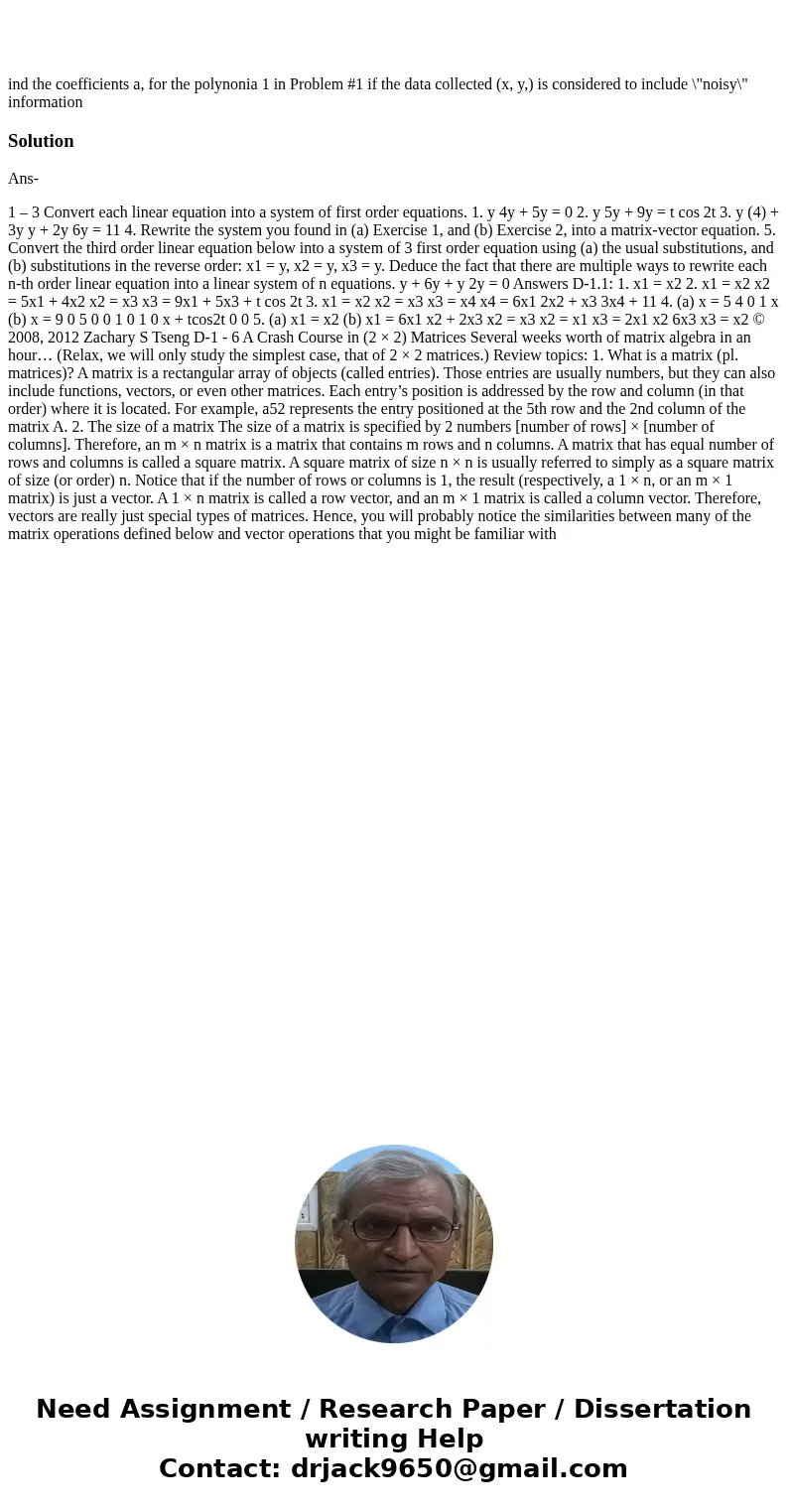ind the coefficients a for the polynonia 1 in Problem 1 if t
Solution
Ans-
1 – 3 Convert each linear equation into a system of first order equations. 1. y 4y + 5y = 0 2. y 5y + 9y = t cos 2t 3. y (4) + 3y y + 2y 6y = 11 4. Rewrite the system you found in (a) Exercise 1, and (b) Exercise 2, into a matrix-vector equation. 5. Convert the third order linear equation below into a system of 3 first order equation using (a) the usual substitutions, and (b) substitutions in the reverse order: x1 = y, x2 = y, x3 = y. Deduce the fact that there are multiple ways to rewrite each n-th order linear equation into a linear system of n equations. y + 6y + y 2y = 0 Answers D-1.1: 1. x1 = x2 2. x1 = x2 x2 = 5x1 + 4x2 x2 = x3 x3 = 9x1 + 5x3 + t cos 2t 3. x1 = x2 x2 = x3 x3 = x4 x4 = 6x1 2x2 + x3 3x4 + 11 4. (a) x = 5 4 0 1 x (b) x = 9 0 5 0 0 1 0 1 0 x + tcos2t 0 0 5. (a) x1 = x2 (b) x1 = 6x1 x2 + 2x3 x2 = x3 x2 = x1 x3 = 2x1 x2 6x3 x3 = x2 © 2008, 2012 Zachary S Tseng D-1 - 6 A Crash Course in (2 × 2) Matrices Several weeks worth of matrix algebra in an hour… (Relax, we will only study the simplest case, that of 2 × 2 matrices.) Review topics: 1. What is a matrix (pl. matrices)? A matrix is a rectangular array of objects (called entries). Those entries are usually numbers, but they can also include functions, vectors, or even other matrices. Each entry’s position is addressed by the row and column (in that order) where it is located. For example, a52 represents the entry positioned at the 5th row and the 2nd column of the matrix A. 2. The size of a matrix The size of a matrix is specified by 2 numbers [number of rows] × [number of columns]. Therefore, an m × n matrix is a matrix that contains m rows and n columns. A matrix that has equal number of rows and columns is called a square matrix. A square matrix of size n × n is usually referred to simply as a square matrix of size (or order) n. Notice that if the number of rows or columns is 1, the result (respectively, a 1 × n, or an m × 1 matrix) is just a vector. A 1 × n matrix is called a row vector, and an m × 1 matrix is called a column vector. Therefore, vectors are really just special types of matrices. Hence, you will probably notice the similarities between many of the matrix operations defined below and vector operations that you might be familiar with

 Homework Sourse
Homework Sourse